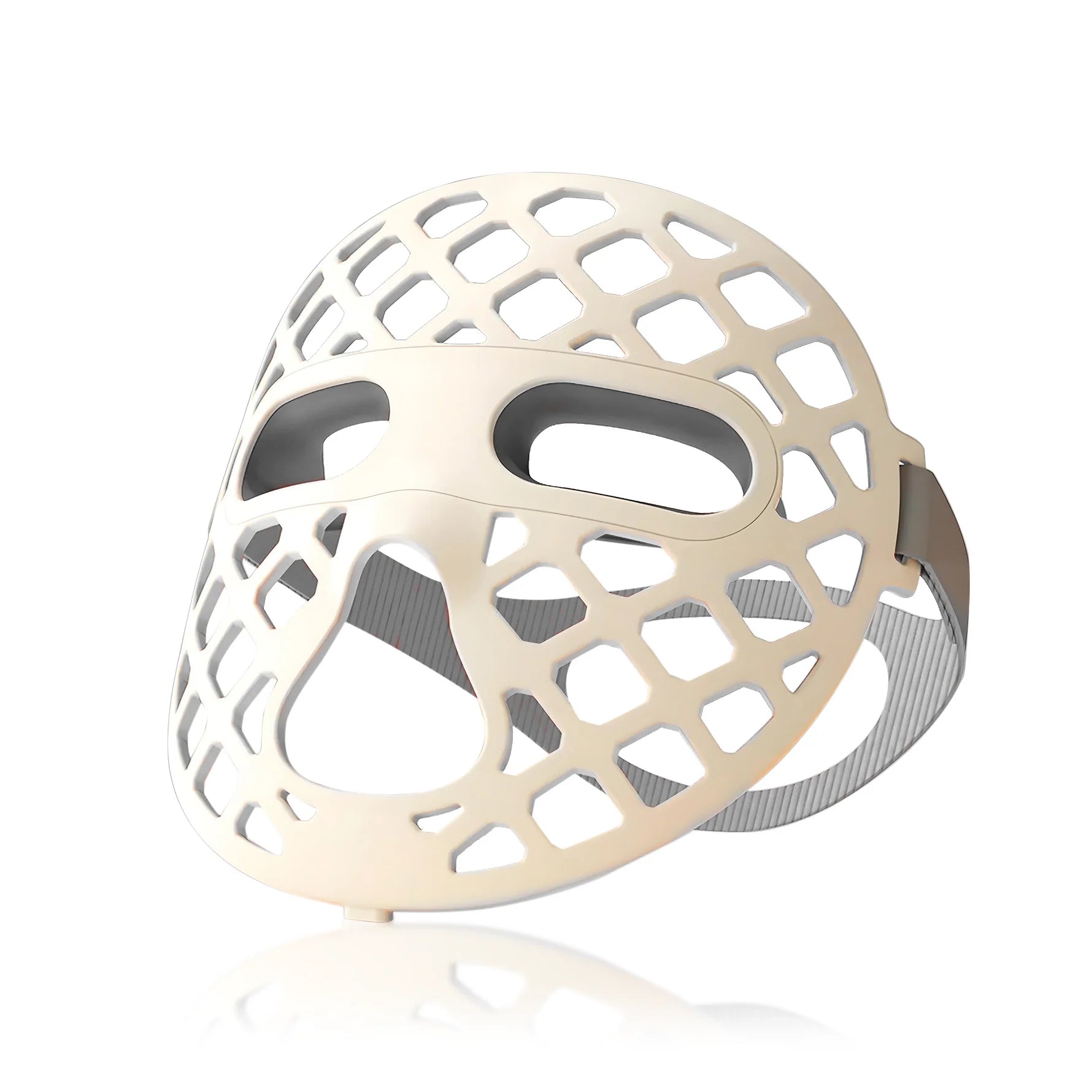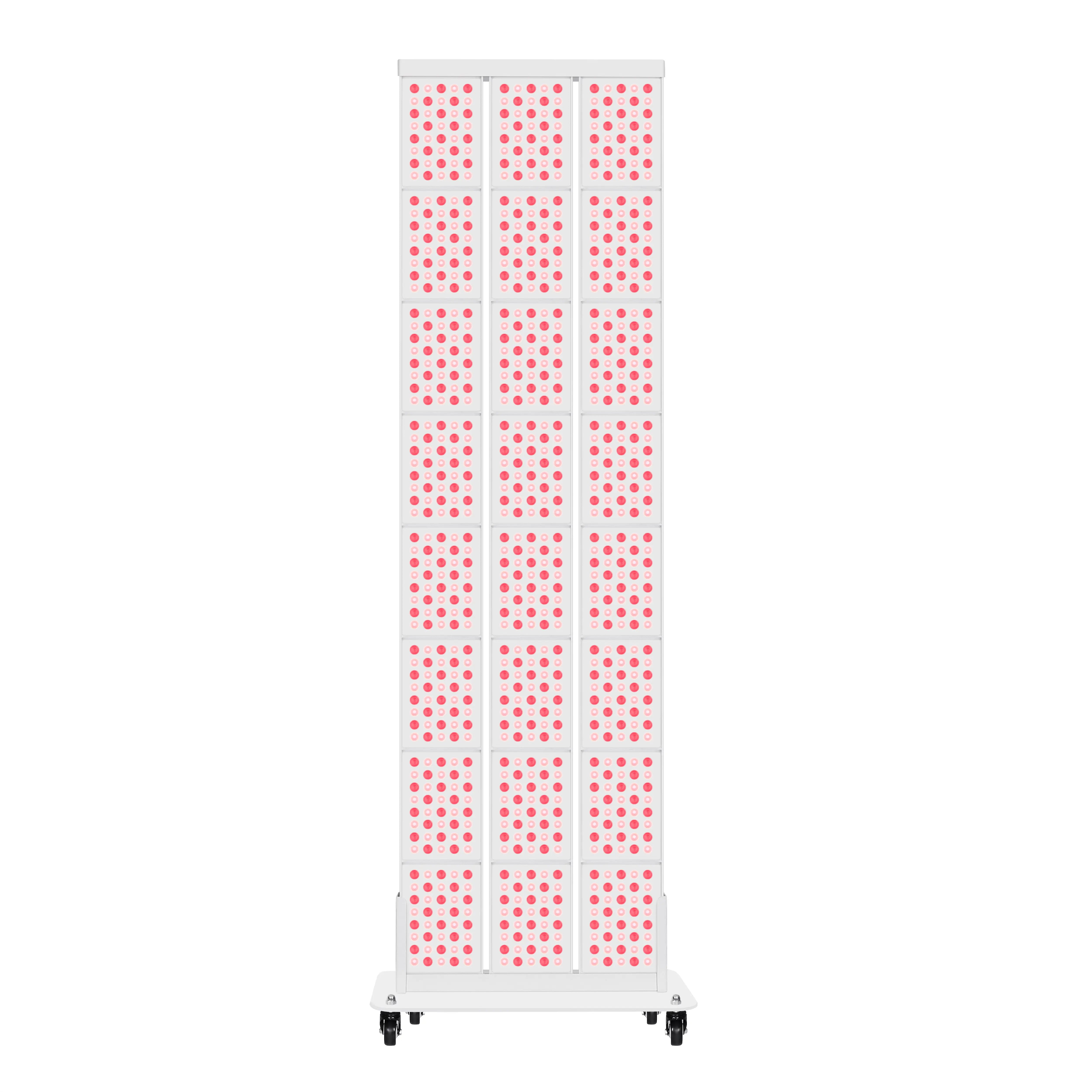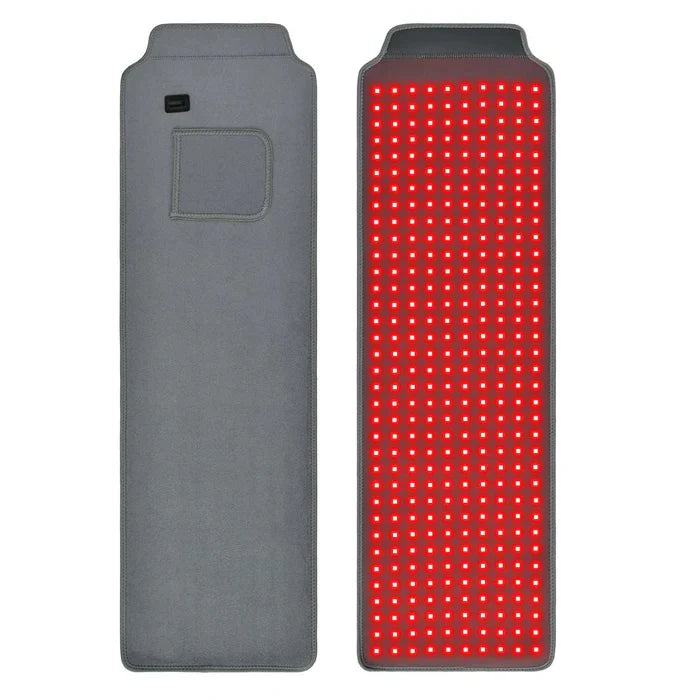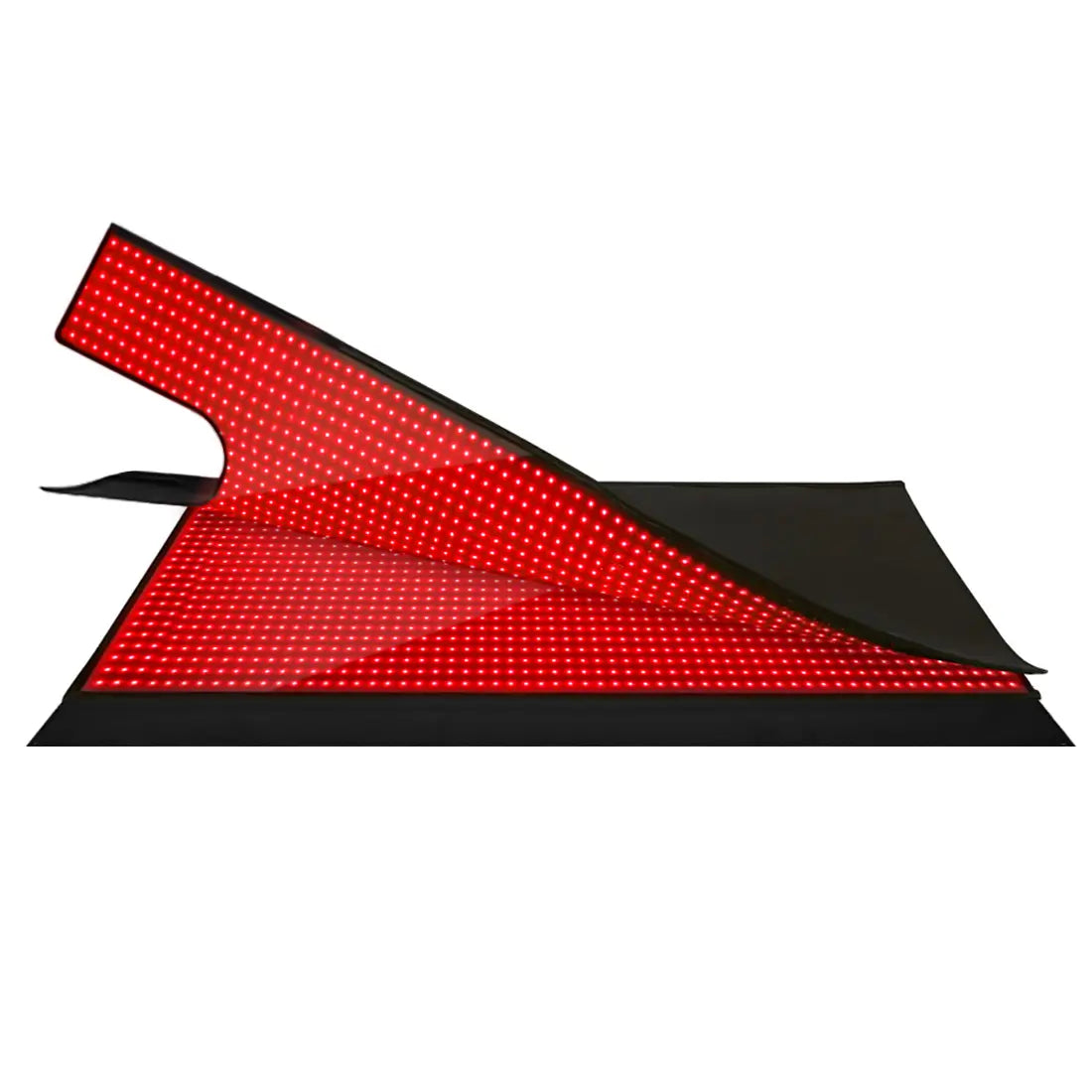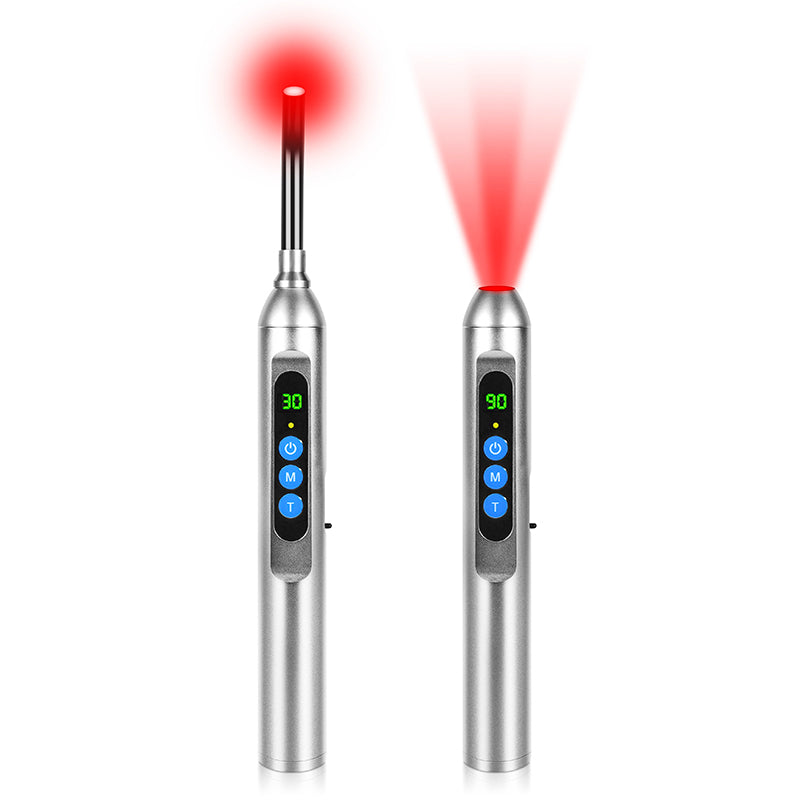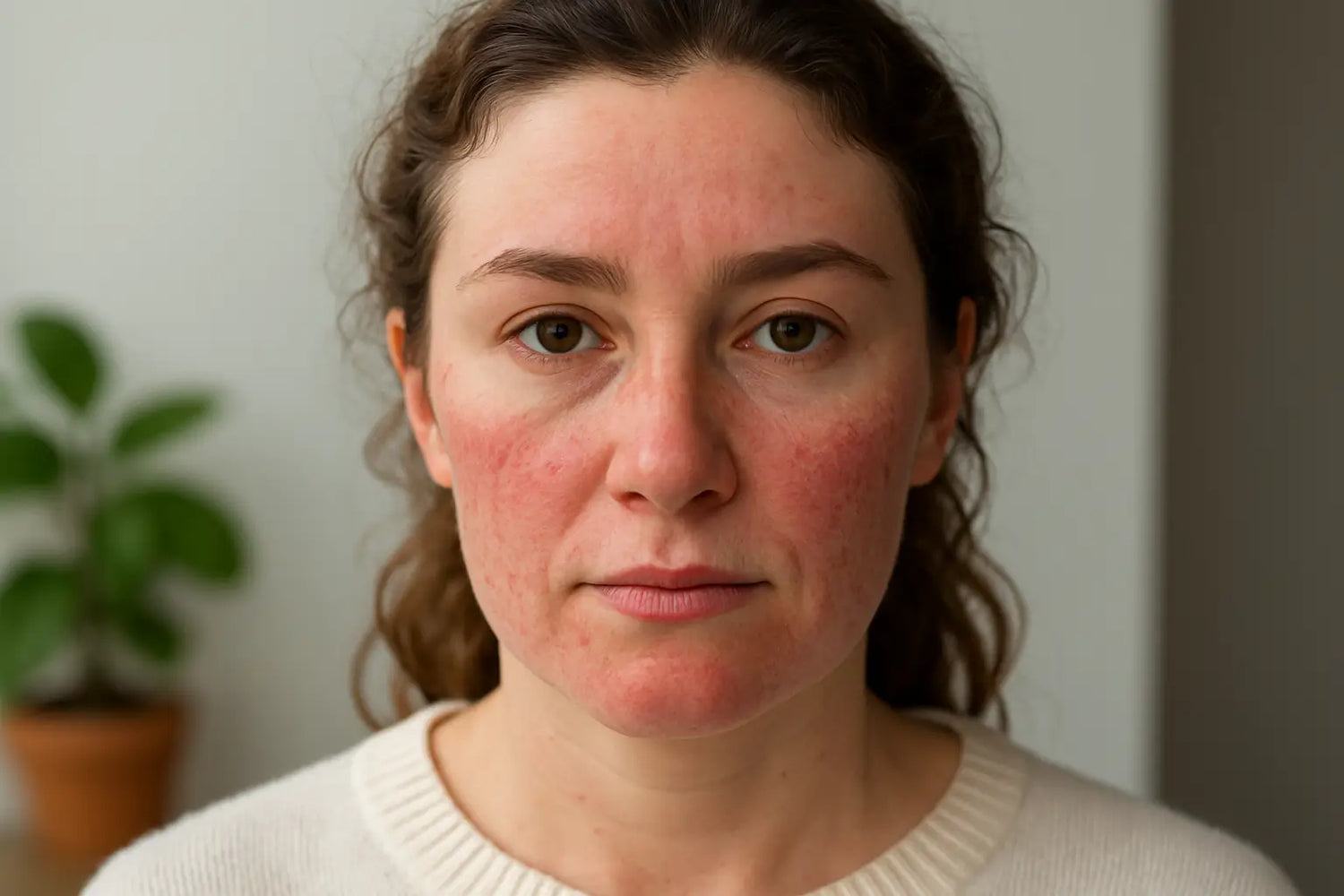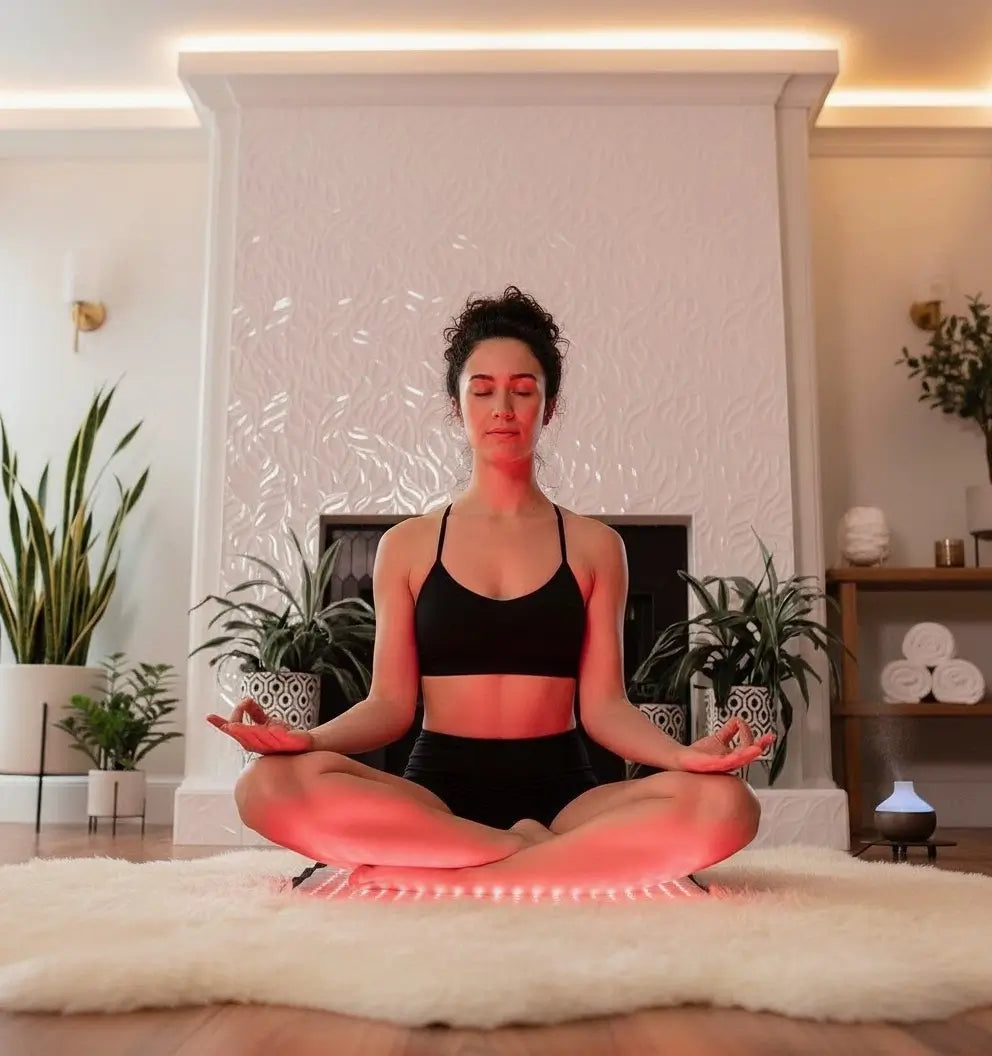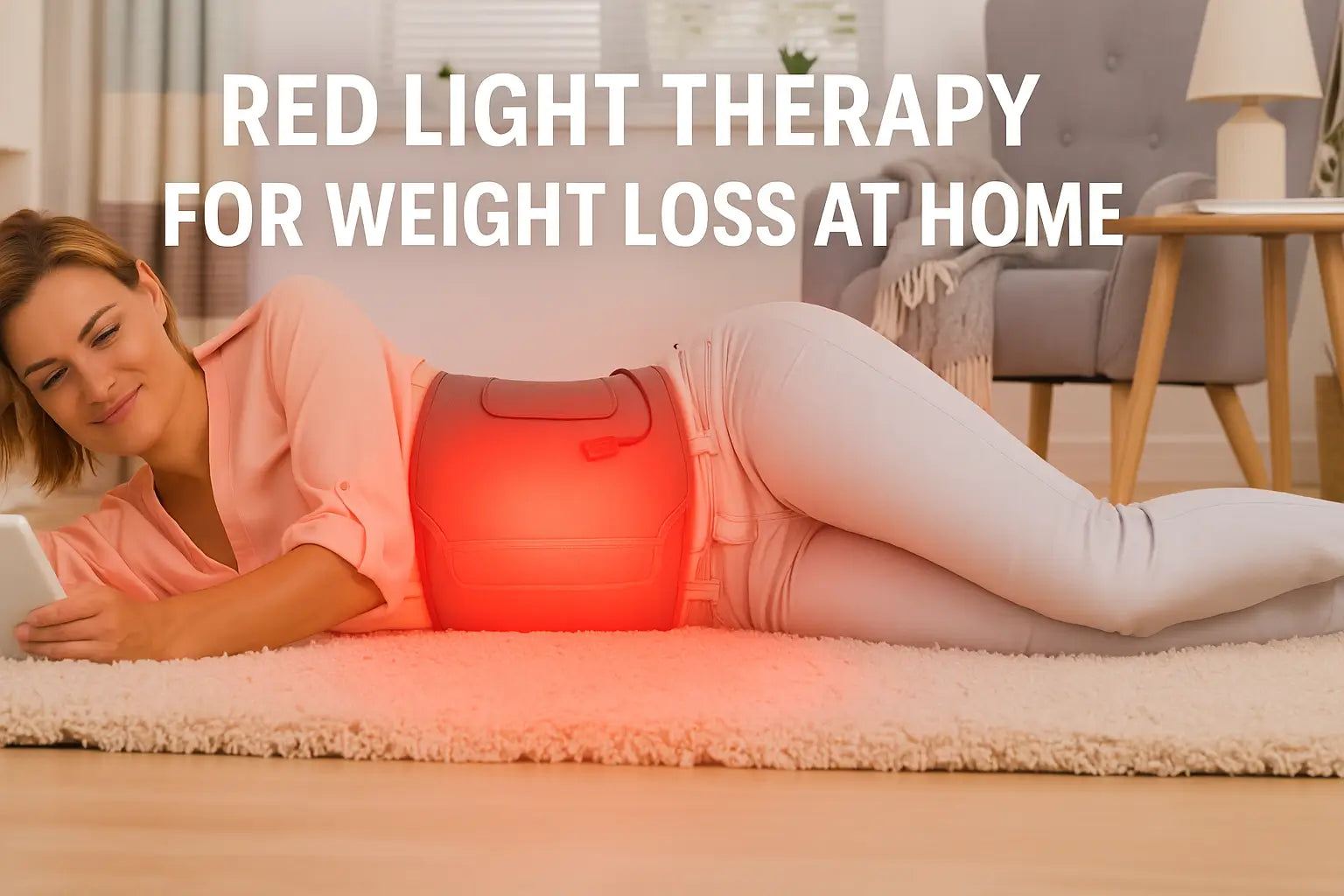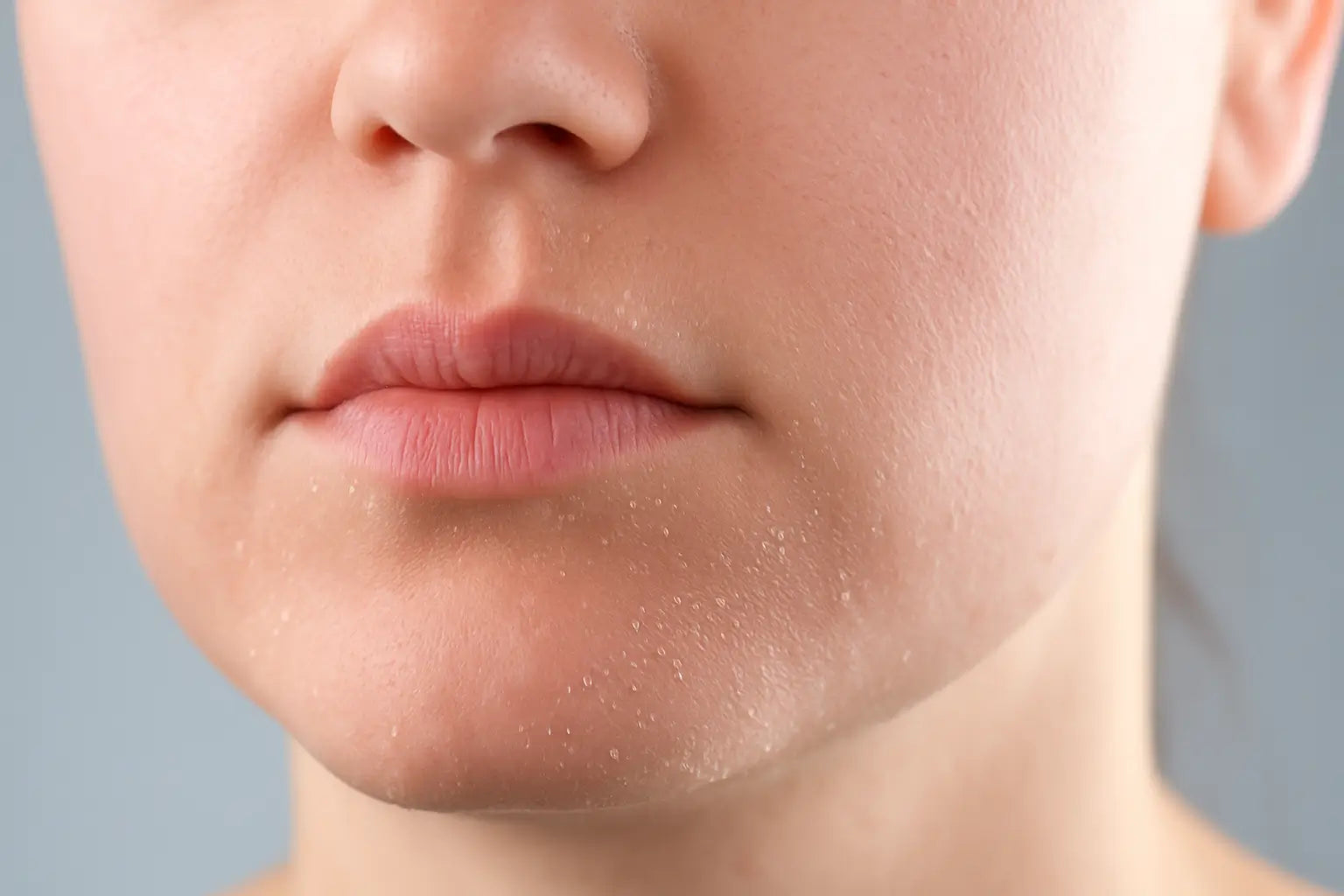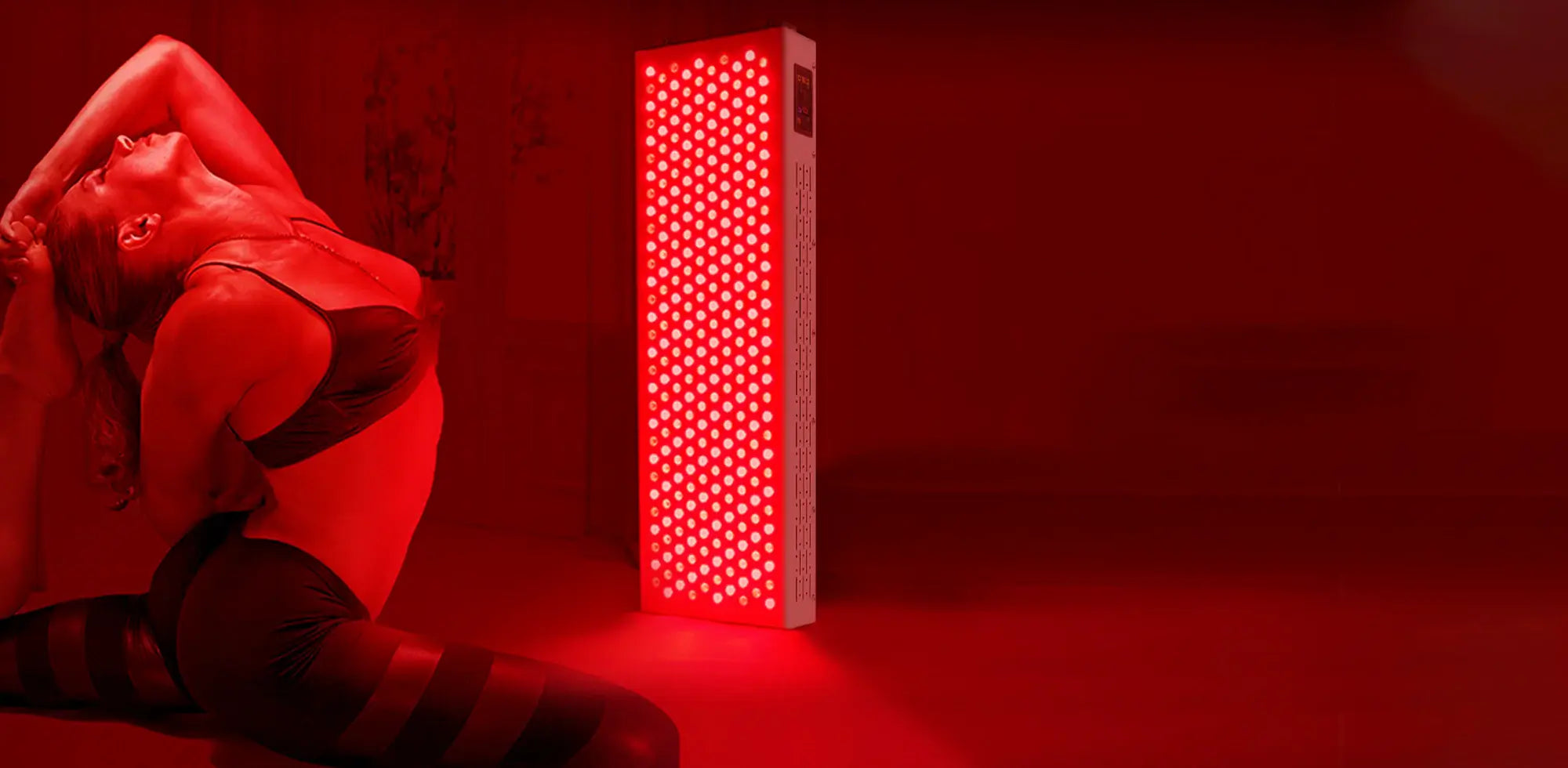Flares can ambush you after a workout, a hot shower, or a glass of wine. The heat rises, cheeks turn crimson, and skin stings long after the moment passes. Relief starts with small, steady habits that calm the trigger cycle. Used regularly, red light therapy can reduce background warmth and help skin feel less reactive. If you are considering red light therapy for rosacea, build it into a simple routine and give it time to work.
What is Rosacea?
Rosacea is a chronic inflammatory disorder of facial skin with a relapsing pattern. It most often involves the cheeks, nose, forehead, and chin and is characterized by episodes of flushing and a background redness that can persist between flares. The condition is common in adults, affects all skin tones, and is not contagious.
Typical features
- Persistent facial redness that does not fully clear between flares
- Sudden flushing with warmth, burning, or stinging
- Small visible surface vessels in some areas
- Acne-like bumps and pustules on a red background in some people
- Swelling or gradual skin thickening in advanced cases
- Eye symptoms in a subset, such as redness, dryness, or a gritty sensation

Diagnosis is clinical. A dermatologist looks at distribution, symptoms, and photographs over time, and rules out conditions that look similar. Management focuses on calming inflammation and limiting personal triggers; later sections explain where red light therapy can support comfort within that broader plan.
What are the Subtypes of Rosacea?
Clinicians commonly describe four subtypes.
- Erythematotelangiectatic: persistent facial redness, visible vessels, stinging or burning.
- Papulopustular: bumps and pustules on a red base, sometimes confused with acne.
- Phymatous: thickened skin, most often on the nose.
- Ocular: red, watery, gritty eyes, crusting on the lids, or recurrent styes.
Red light therapy for rosacea mainly supports inflammatory comfort and diffuse redness. Thickened tissue or clear surface vessels usually require in-office vascular lasers or other procedures. Eye involvement needs coordinated care with eye specialists.
Rosacea Triggers and Pairing Red Light Therapy with Daily Care
Flares often relate to ultraviolet exposure, heat or cold, emotional or physical stress, very hot beverages, spicy meals, and alcohol. A short daily log makes patterns obvious within weeks. Keep red light therapy as your steady baseline and reduce the fuel that drives flares.
| Likely trigger | Practical swap |
| Midday sun or outdoor heat | Broad-spectrum SPF 30+, hat, shade, cool compress afterward |
| Very hot showers or saunas | Lukewarm water, shorter showers |
| Hot coffee or tea | Warm or iced options |
| Spicy dinners and red wine | Milder seasoning, alternate beverages |
| Intense cardio in hot weather | Cooler times of day, interval pacing |
Gentle cleansing, a water-light moisturizer, and sunscreen every morning help the skin tolerate red light therapy for rosacea with fewer setbacks.
How Red Therapy Helps Rosacea Symptoms
Photobiomodulation describes how specific light interacts with cellular targets that influence energy and inflammatory signaling. With steady use, red light therapy masks can ease warmth, burning, and background redness for many people. Skin applications often use red wavelengths around 630 to 660 nanometers and near-infrared around 810 to 850 nanometers. There is no universal “best wavelength for rosacea,” so follow device instructions, maintain a set distance, and start with brief sessions to test tolerance. Clear gains build over time rather than overnight. This is where consistent red light therapy for rosacea sessions matter.

Safety Considerations for Red Light Therapy for Rosacea
Home LED use has a strong safety profile when directions are followed.
- Protect the eyes with suitable shields.
- Pause during active irritation, infections, or open skin.
- Review medications and health conditions that raise light sensitivity.
- Ocular symptoms such as gritty feeling, light sensitivity, or frequent styes call for medical care; do not direct red light therapy at the eyes without professional oversight.
- During pregnancy or while using prescription topicals, ask your clinician before starting or changing your routine.
These steps keep red light therapy for rosacea both comfortable and predictable.
At Home Red Light Therapy for Rosacea Expectations and Routine
Consistency beats intensity. Most readers do well with short sessions several times per week for a month or two, then a maintenance rhythm if skin stays calm. Keep the routine simple.

- Cleanse with a mild, fragrance-free wash and pat dry.
- Use red light therapy for rosacea for the time and distance listed in your device guide.
- Apply a barrier-supportive moisturizer.
- In the morning, finish with SPF 30 or higher.
If tingling or heat lingers, shorten the next session or increase distance. Track results with quick phone photos taken in similar lighting. For many, this at-home approach with red light therapy smooths daily comfort and reduces the visual intensity of flares. Questions about how often to use red light therapy for rosacea are common. The safest answer is to follow the product schedule and adjust with your clinician based on sensitivity and results.
When to See a Doctor Beyond Red Light Therapy for Rosacea
Make an appointment if redness intensifies week by week, bumps persist despite careful routines, skin begins to thicken, or eye symptoms appear. Office procedures such as vascular lasers and other targeted options address features that home LEDs do not reach. Red light therapy for rosacea can remain in your plan to support comfort between visits, yet medication and procedural choices should be individualized.
Manage Rosacea with Red Light Therapy
Calmer skin often comes from small, consistent steps. Use sunscreen daily, avoid personal triggers, and keep products gentle. Within that framework, red light therapy serves as a steady tool that helps many people feel less heat and see less background redness. If you choose red light therapy for rosacea, give it time, protect your eyes, and review your plan with a clinician so the approach matches your subtype and goals. With patience and a simple schedule, flares usually feel easier to live with and skin comfort improves.
FAQs
Q1. How do I verify the details regarding red light therapy machines for rosacea?
Check the wavelengths, typically in the red range (around 630–660 nm) and near-infrared range (around 810–850 nm). For a detailed breakdown, check out our blog on 850nm vs 660nm. Provide sufficient light at a good distance, in an even distribution for the area to be treated, regulate the heat, and do not flicker. Little, constant doses tend to be better than intense session doses.
Q2. Is red light therapy for rosacea ever too much?
Yes. Excessive heat may lead to extended flushing or a constricting, stinging sensation. Overuse signs include persistent heat and transparent irritability following treatments. Have your clinician recommend reducing treatment duration, increasing breaks, or performing it less frequently. Resume slowly once your skin has improved, and discuss the frequency with your clinician.
Q3. How is red light therapy for rosacea different from creams that doctors prescribe?
Keep the sequence simple: cleanse, red light session, then apply dermatologist-directed topicals and moisturizer. Avoid strong acids or retinoids immediately before sessions. If using azelaic acid or metronidazole, introduce light on alternate days at first, then adjust frequency as your tolerance improves.
Q4. Is red light therapy for rosacea safe for individuals who have darker skin?
Home LEDs are skin-safe and are suitable for all skin types. They are not harmful, unlike lasers that target blood cells. Always patch test first and see if you are sensitive to heat. Keep the treatments brief, use the advised distance, and aim to be regular instead of strong to remain comfortable.
Q5. How do I clean and maintain an LED mask for rosacea?
Remove the item from the socket. Then clean the inside with a soft cloth and a mild cleaner that doesn't scratch. Avoid harsh chemicals and scratching lenses or lights. Let it air dry thoroughly before storing it. Cleaning it frequently prevents germs from accumulating and prevents sensitive skin from becoming irritated.


